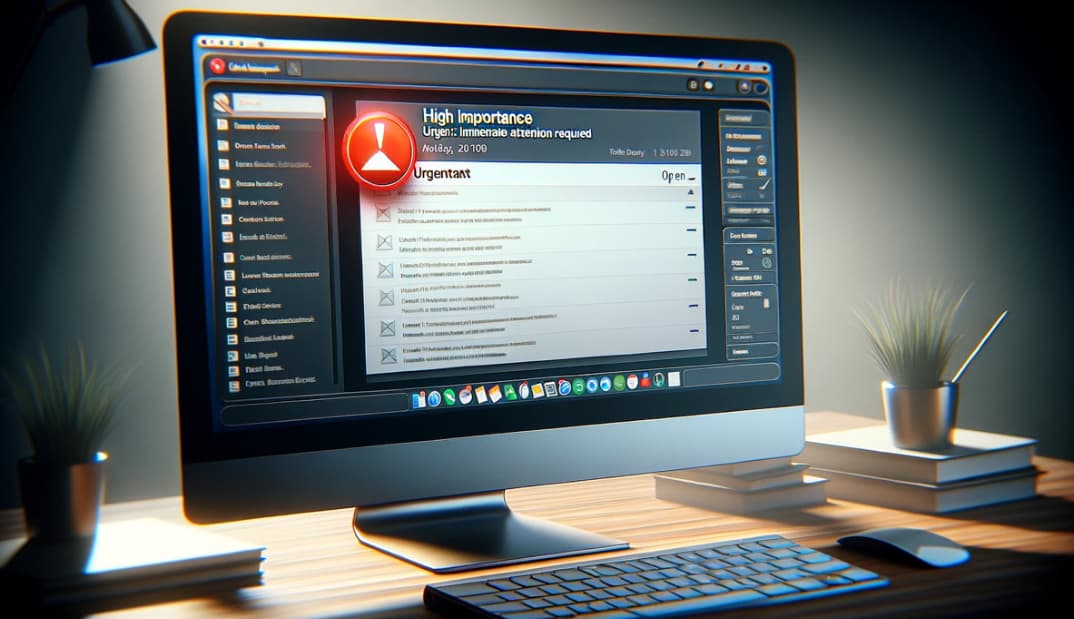In the realm of professional and personal communication, email remains a cornerstone. However, not all emails carry the same weight or urgency. Understanding how to navigate these nuances can significantly enhance how one’s messages are received and prioritized. Here’s a comprehensive guide on how to effectively manage email importance settings to ensure your communications are aligned with your intent.
Understanding Message Importance
The importance level of an email can play a pivotal role in determining the speed and nature of a recipient’s response. To ensure that your message is perceived and acted upon as intended, consider the following steps:
- Identify the Urgency: Before sending an email, evaluate its urgency. Is it a critical update that requires immediate attention, or can it wait? This initial assessment is vital for setting the correct tone and expectation;
- Marking High Importance: For emails that contain urgent information or tasks demanding swift action, mark them as “High Importance.” This is not just a label; it’s a signal to the recipient about the critical nature of the email. It highlights the necessity for prompt attention and action, ensuring that the message stands out in a crowded inbox;
- Choosing Low Importance for Informative Messages: When your email is meant to inform rather than prompt immediate action—such as general updates, informational newsletters, or non-urgent communications—opt for the “Low Importance” marker. This distinction helps in managing the recipient’s expectations and allows them to prioritize their email responses more effectively;
- Communicate Expectations Clearly: Beyond marking an email for its level of importance, it’s beneficial to clearly state your expectations within the email body. If a response is needed, mention the preferred timeframe. For informational emails, a simple acknowledgment might suffice;
- Respect Recipient’s Time: Understanding and respecting the recipient’s time can foster a more considerate email culture. By judiciously using the importance markers, you convey respect for the recipient’s workload and priorities, encouraging a healthier communication environment.
The act of categorizing emails by their importance not only aids in better inbox management but also enhances the efficiency of email communication. It ensures that critical messages receive the attention they need, while informational ones do not add unnecessary pressure. This nuanced approach to email communication can significantly improve the clarity and effectiveness of your interactions.
Initiating a New Email
Starting a new email is the first step in the communication process. Upon opening your email client, look for the “New Email” button, which is typically prominently displayed. This action opens a fresh composition window where you can begin crafting your message.
Adjusting Importance in the Email Composition
Within the composition window, attention to detail in conveying the message’s urgency is key. The “Tags” group on the Ribbon, a feature found in many email clients, offers options to set your email’s importance level. Here, you can choose between “High Importance” or “Low Importance,” depending on the nature of your message. Most email platforms display a visible indicator next to the message—either in the inbox list or the email header—to highlight the set importance, making it immediately apparent to recipients.
Monitoring Importance Settings
As you compose your email, keeping an eye on the “Tags” group within the Ribbon ensures that the importance level is correctly set. If either “High Importance” or “Low Importance” is highlighted, it signifies that the setting is active for the current message. This feature aids in avoiding any miscommunication regarding the email’s urgency.
Editing Importance for Received Emails
There are scenarios where the importance of an email you’ve received may need to be adjusted post-reception. To amend the importance level of a received email, one must first open the email by double-clicking it, as changes cannot be made from the preview pane in the Reading Pane. Within the “Tags” group on the Ribbon, selecting the “More” arrow leads to the “Message Options” dialog.
Here, the “Importance” dropdown menu allows for a change in the email’s importance level. After selecting the desired option, closing the dialog and the email prompts a save confirmation from the email client, such as Outlook, where confirming the save solidifies the changes.
Conclusion: The Value of Proper Importance Settings
Adopting a strategic approach to setting email importance ensures that messages are not only received but also given the attention they deserve based on their urgency. This practice fosters more efficient communication, aids in better time management for both sender and recipient, and underscores the sender’s respect for the recipient’s workload and priorities. By meticulously adjusting the importance level of emails, both senders and recipients can navigate their inboxes more effectively, leading to a smoother, more productive communication flow.


Leave a Reply